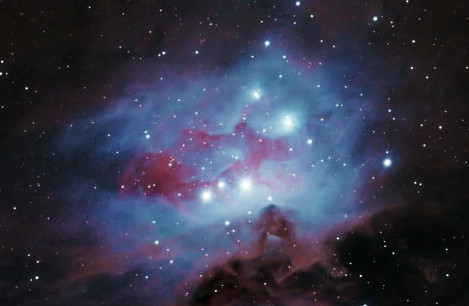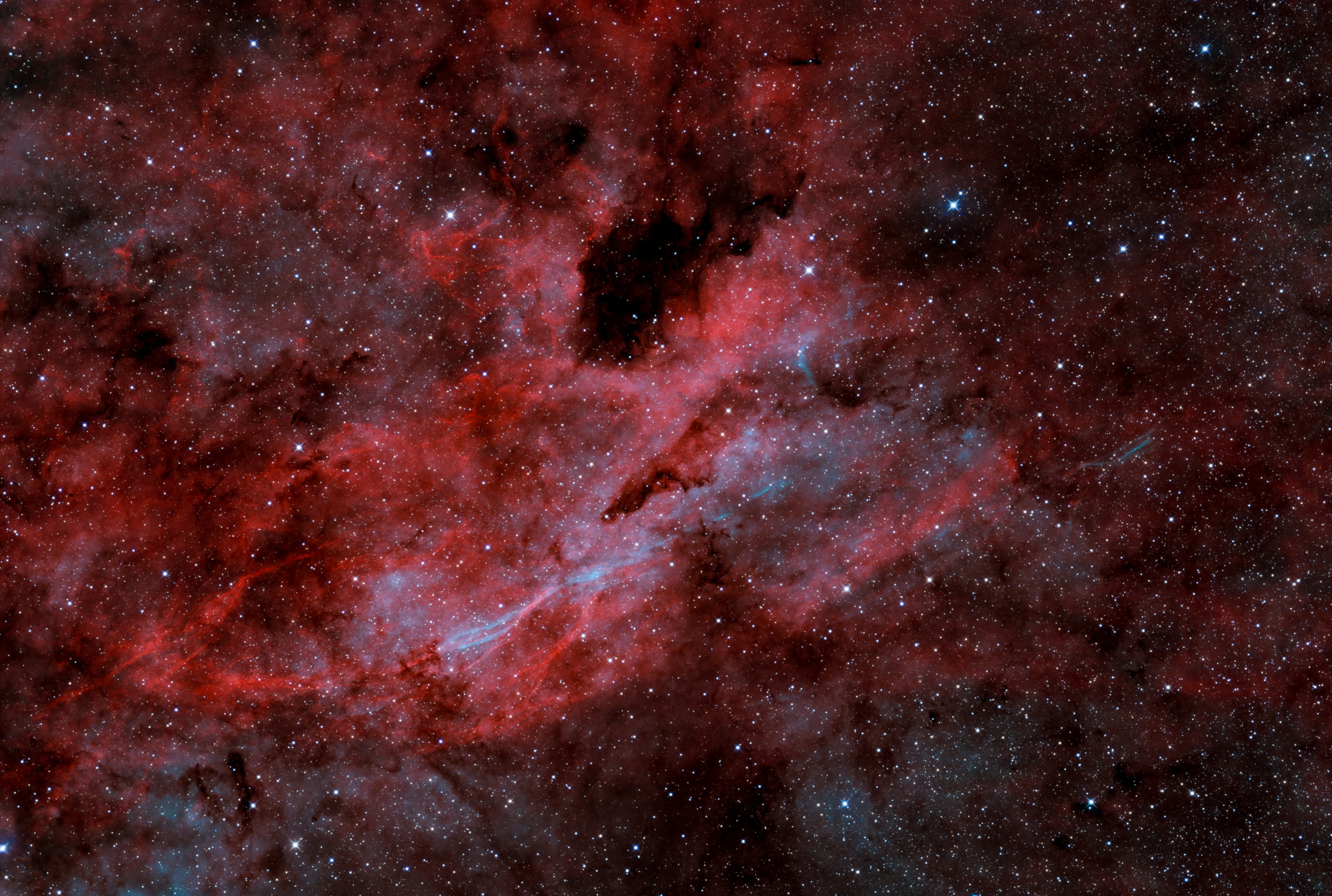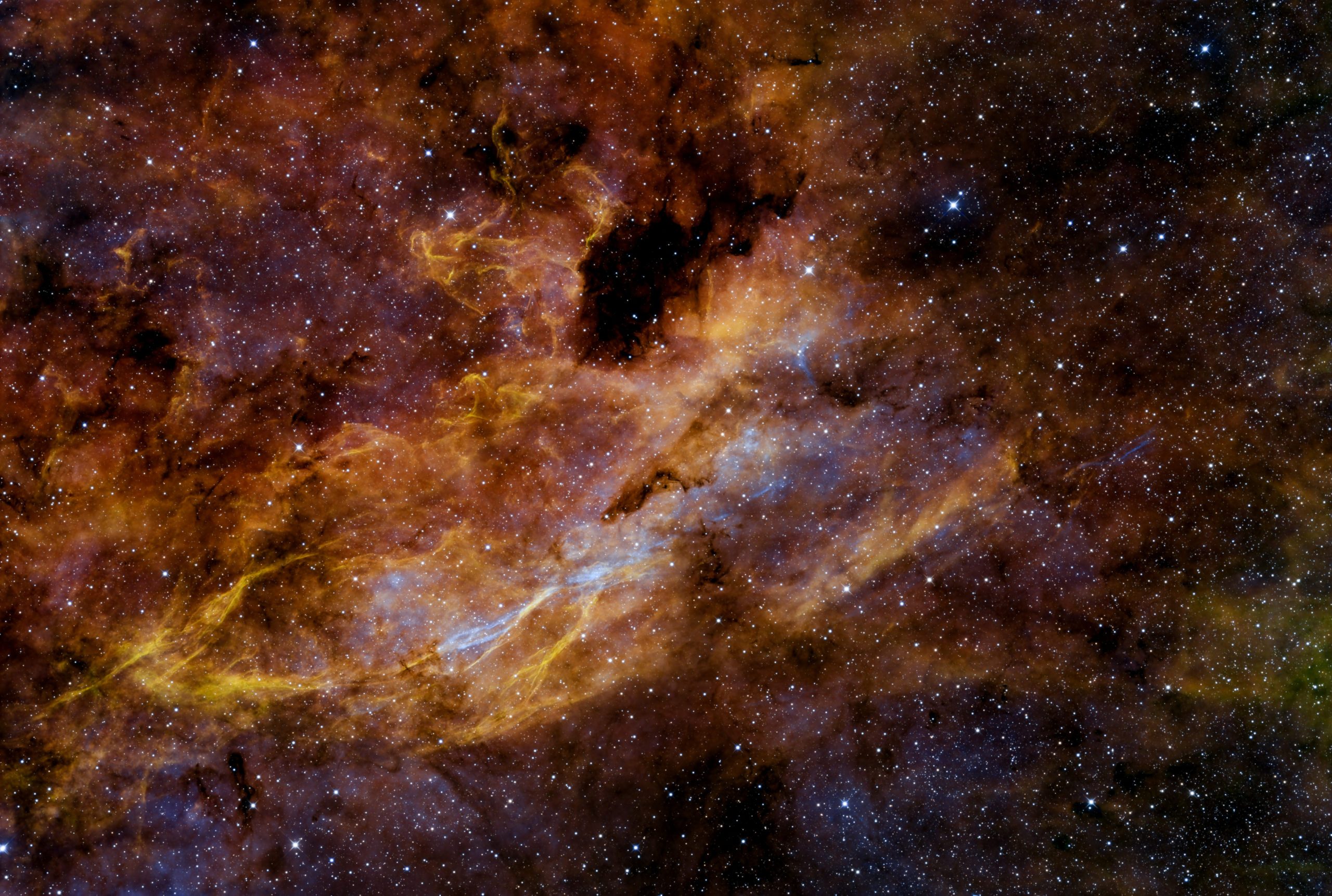DWB 41 and LBN 113
Constellation: Cygnus
DWB 41 is an HII region in the constellation of Cygnus. LBN 223 (LBN 076.90+03.21) is the southern part of DWB 41, and DWB 35 is the bright streak-shaped nebula to the West of LBN 223. The dark nebula to the North is Barnard 343. Link to interactive sky chart.
There is little literature about this region and only few detailed images have been taken of these targets. Hence, I decided to take narrow band images with the 14″ Newtonian, as its field of view is ideal of this region. This led to the identification of hereto undescribed [O III] filaments in LBN 223, and a hypothesis outlined below.
Dates:
This image was taken in July 2025
Image 1: Color palette is HOO
Image 2: Color palette is HSO
Telescope & Mount:
656 14″ Corrected Newtonian on a ASA DDM100 mount.
Imaging:
Camera: PlayerOne Zeus Mono (bin 1×1)
Data:
Ha: 85x300s
[O III]: 117x300s
[S II]: 83x300s
Total integration time: 23h 45′
Narrow band images:
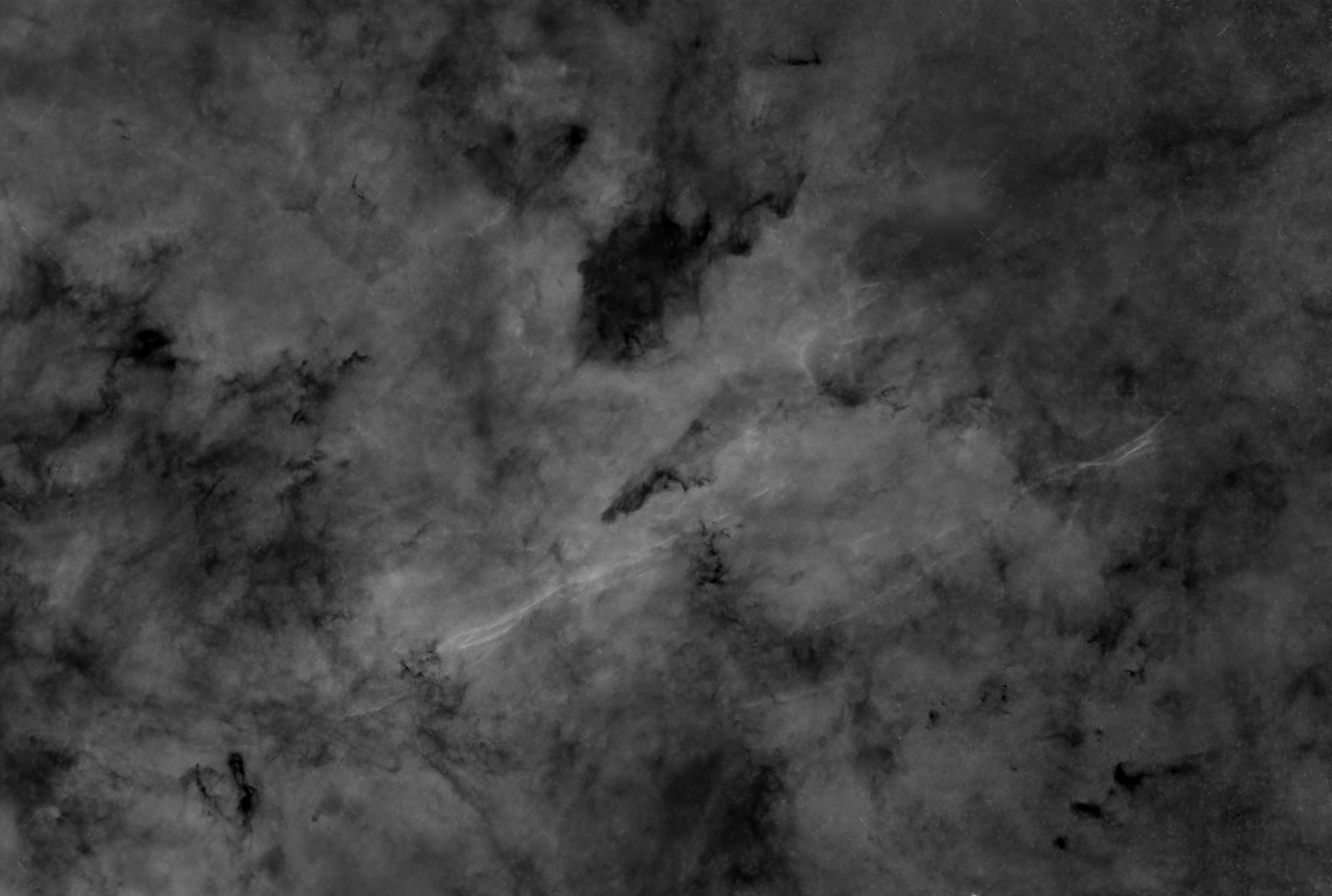
[O III]
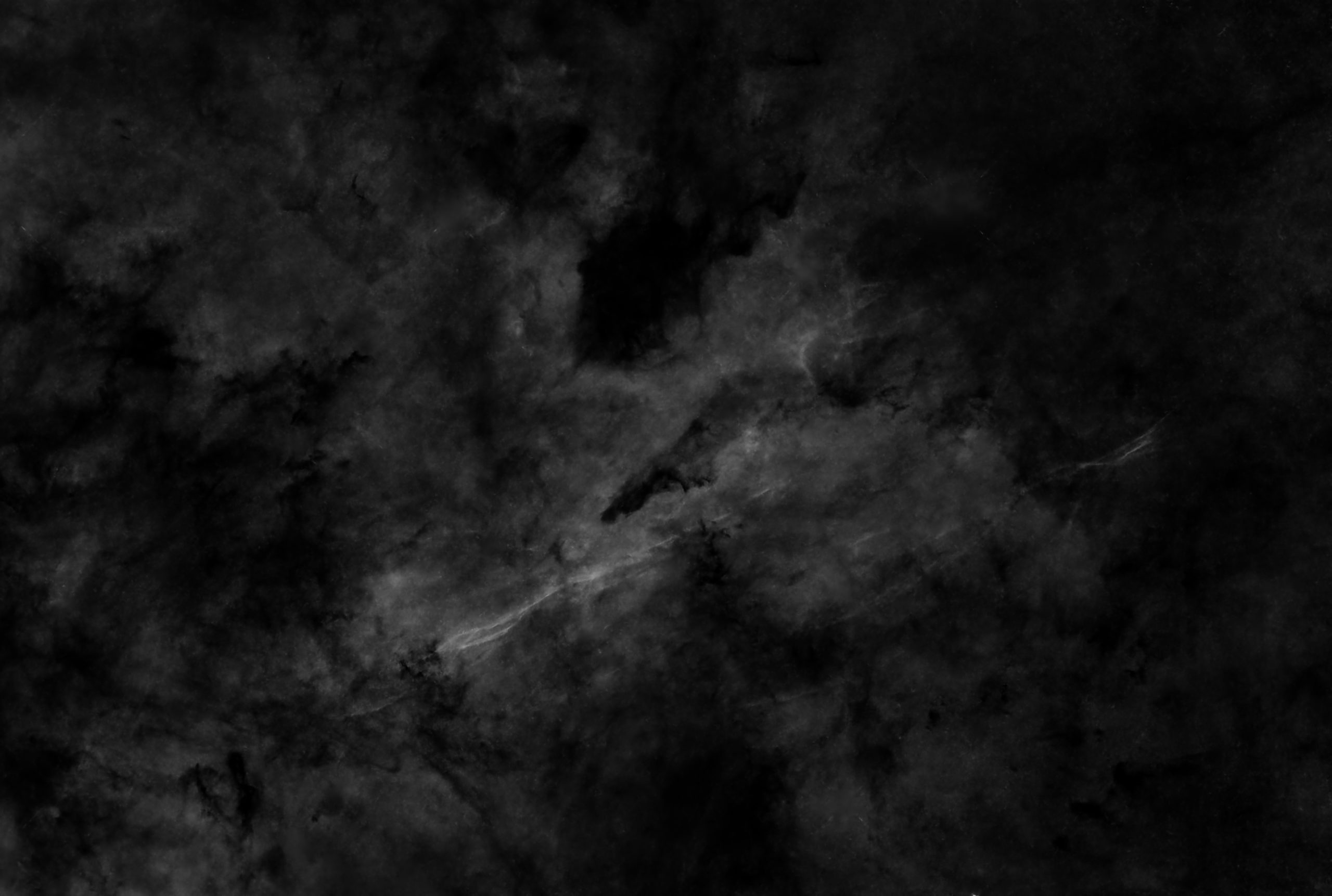
[O III] enhanced.
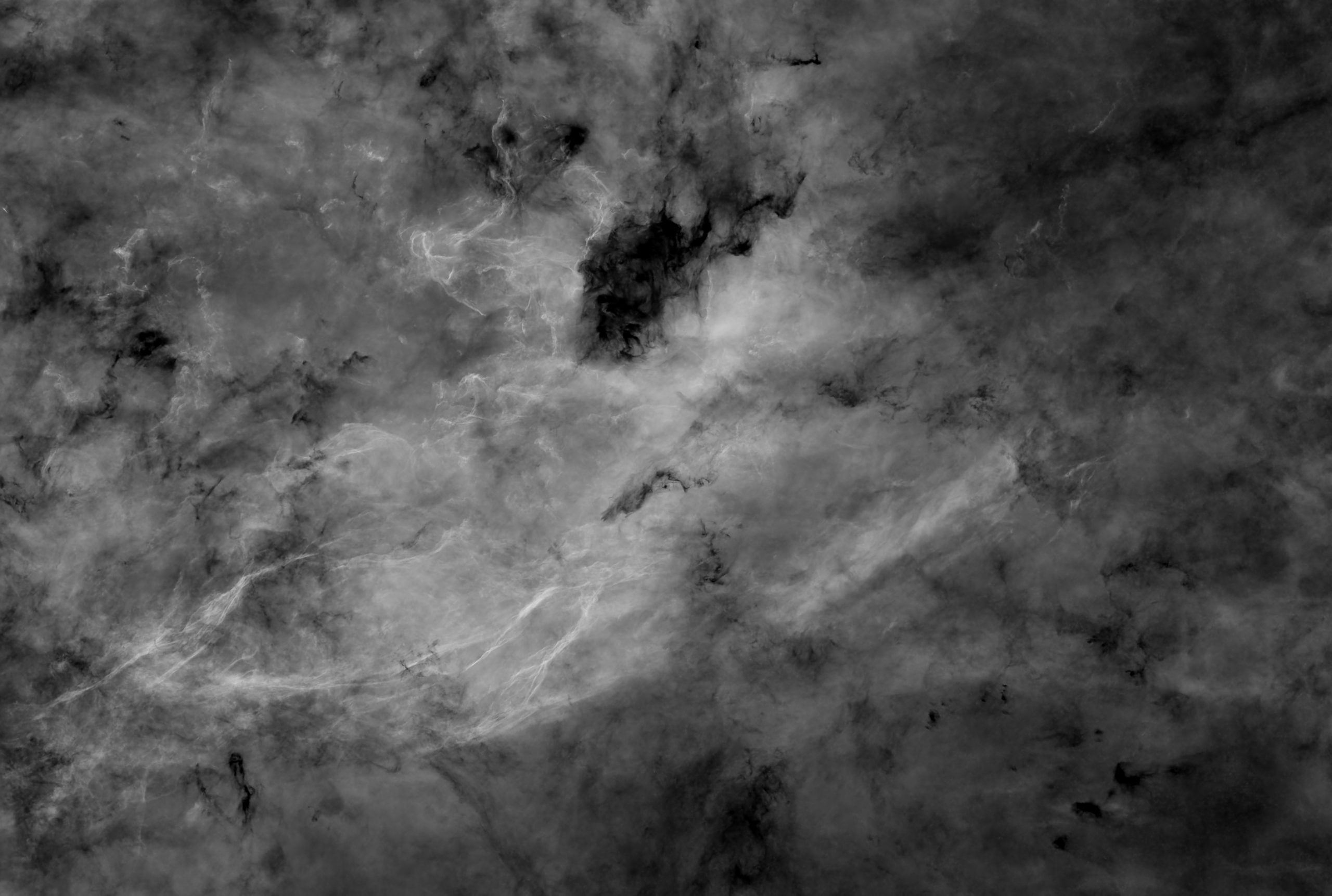
Ha
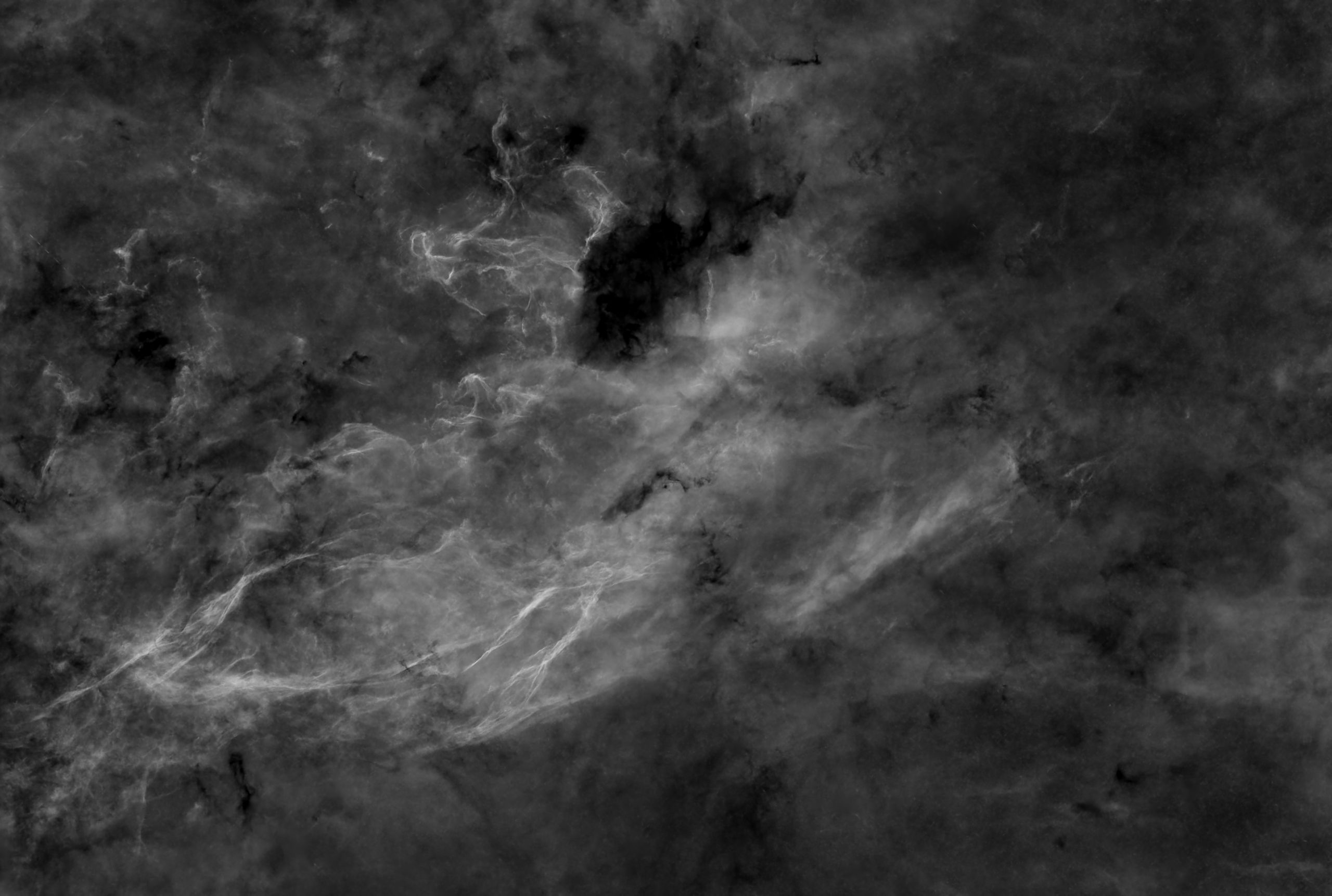
[S II]
Observations:
- There are newly identified [O III] filaments within LBN 223.
- There is a high degree of Ha to [S II] correlation.
These features are interesting in that they are often associated with a supernova. Unfortunately, there is no literature about such optical observations of DBW 41 and LBN 223, as they are generally part of widefield images rather than detailed narrow band photographs.
Comparing the 1420 MHz Canadian Galactic Plane Survey (CGPS) with the DSS2/color layer of this region using Aladin (desktop v12.0) leads to some interesting observations (see Figure below). The bright structures in Figures B and C not only overlap perfectly but are also conspicuously similar.
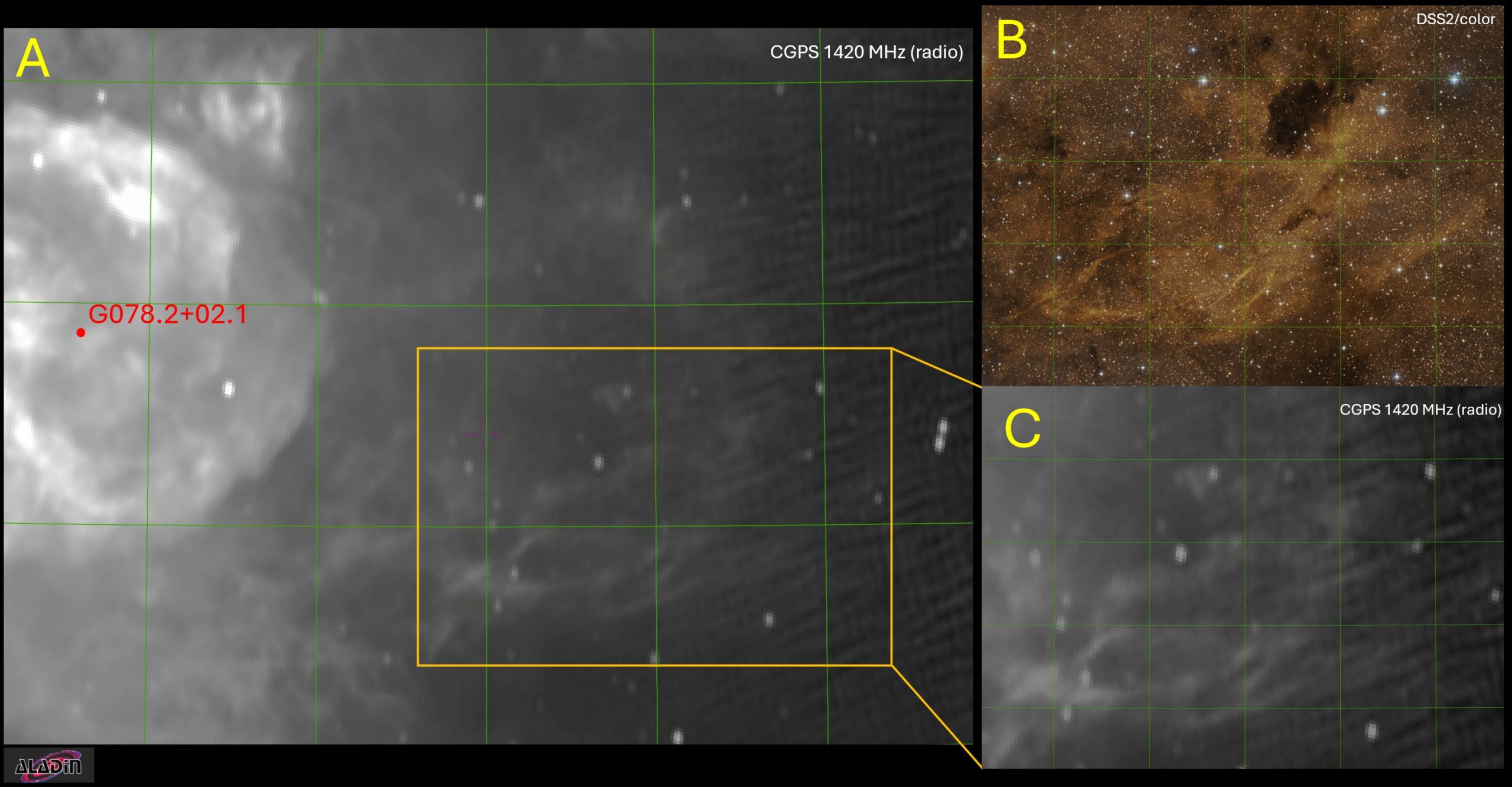
Legend: A shows the 1420 MHz signal to the West of SNR G078.2+02.1. The orange box contains DWB 41 (C) and the corresponding DSS2/color image is depicted in B.
The radio signal in the orange box of Figure A (above) seems to be part of a faint and almost circular shell shown in the Figure below (red circle).

This faint shell has been described by Y. Ladouceur and S. Pineault*. In their article about the SNR G78.2+2.1, the authors wrote:
We have found evidence of what appears to be a nearly complete shell nearly 1◦ in diameter. This structure is seen in the radio continuum at 1420 and 408 MHz (Figs. 25 and 26), in the 21 cm Hi line (Fig. 27) and in the 60 μm image (Fig.28). Although the projected position of this structure near the north-western periphery of the SNR could be a simple line-of-sight coincidence, the fact that the continuum radio shell in that sector is somewhat fainter and slightly outside the more or less spherical outline of the remnant suggests that this faint shell could have been caused by a breakout of the SNR blast wave into a medium of lower density.
Figure 29 shows an archival ROSAT3 X-ray image showing emission between 0.1 and 2.4 keV. X-ray emission is seen to coincide with the brightest radio emitting regions of the SNR to the north-east, south and south-west but is absent in the north west. Figure 30, which is a superposition of the X-ray emission and 1420 MHz continuum image, shows that the distant X-ray emission to the north-west matches closely the outer boundary of the new faint shell (Fig. 25).
The faint shell […] is clearly visible on infrared and radio continuum images and also in the Hi between −4 and−12 km/s.
Figures 25 to 30 of their article are shown below. Note that they are using the galatic coordinates.
* Y. Ladouceur and S. Pineault. New perspectives on the supernova remnant G78.2+2.1. A&A 490, 197-211 (2008)
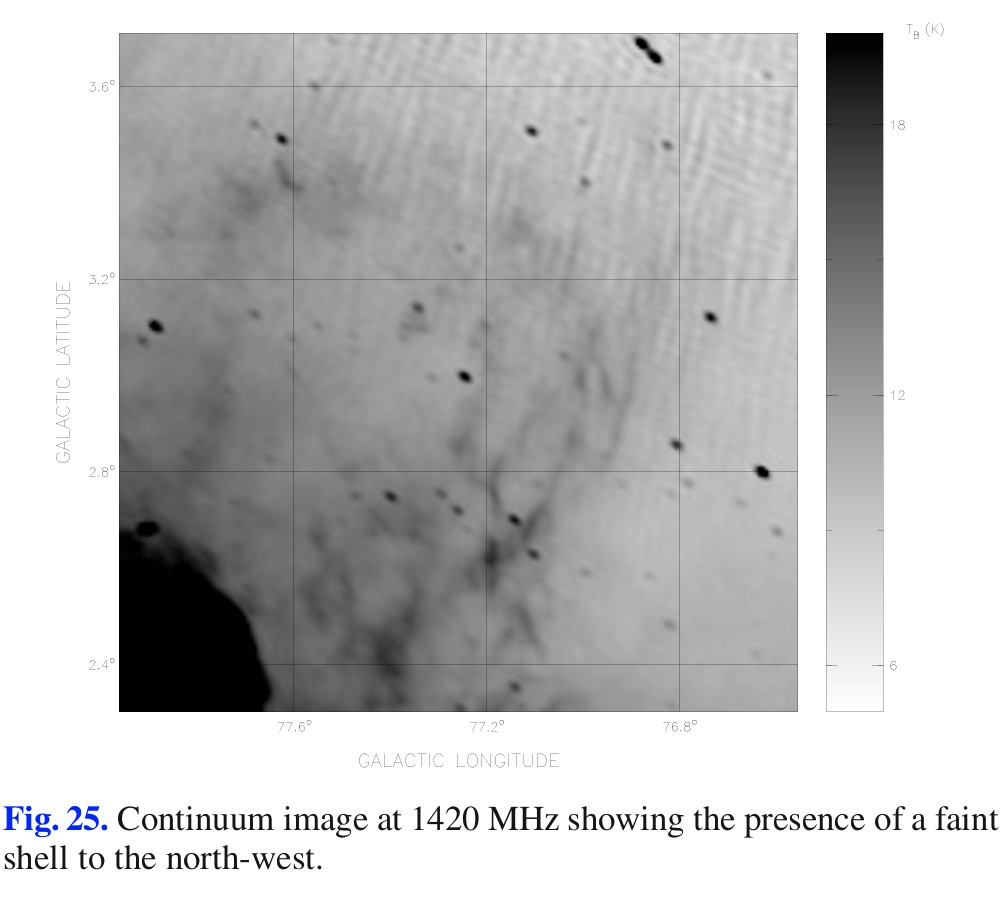
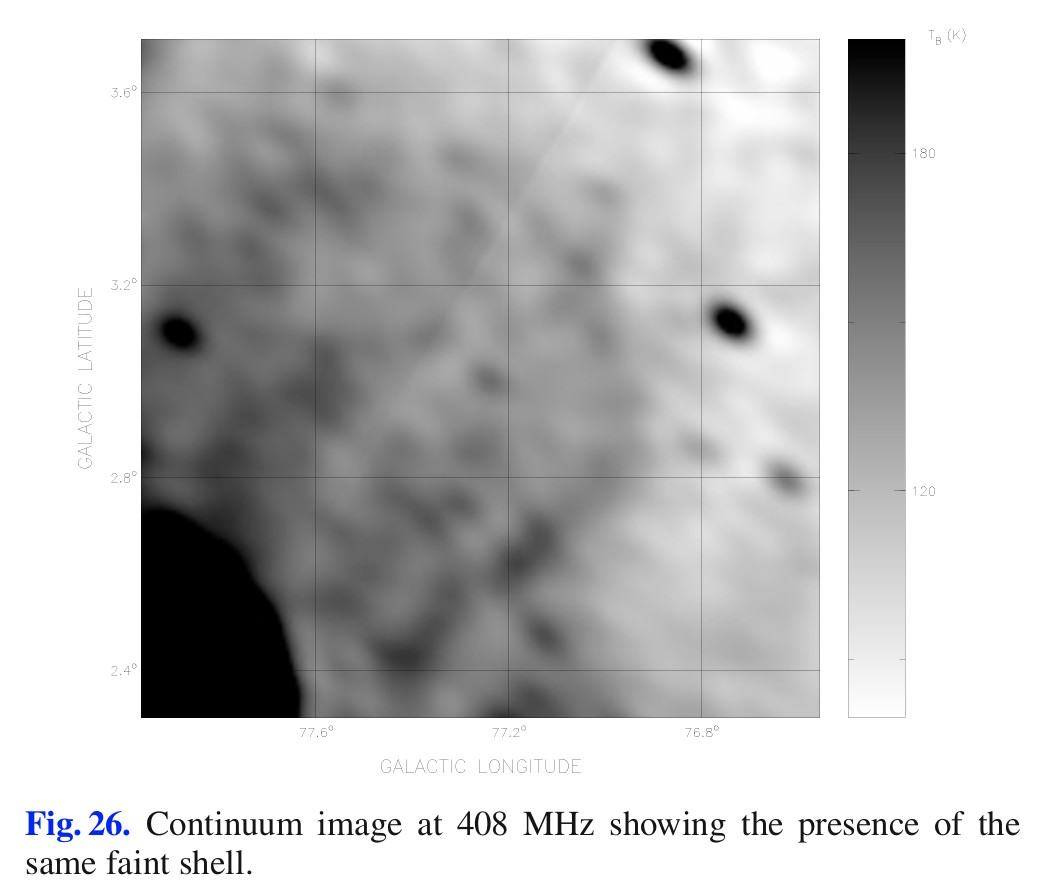
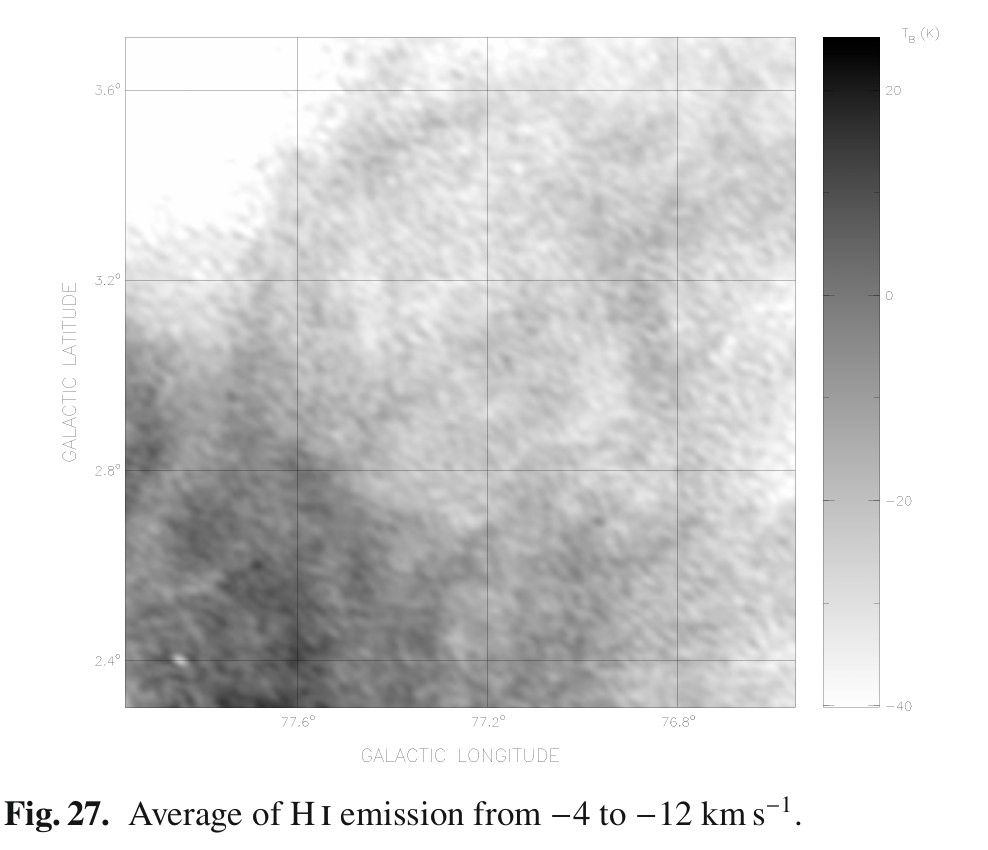
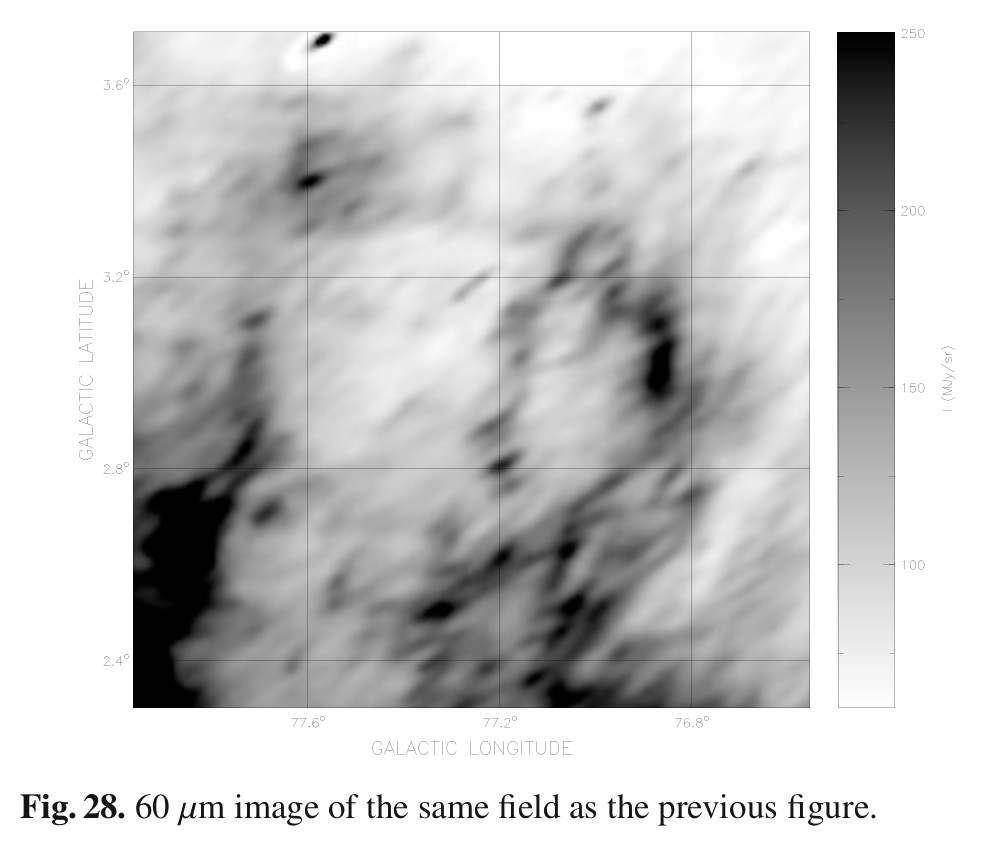
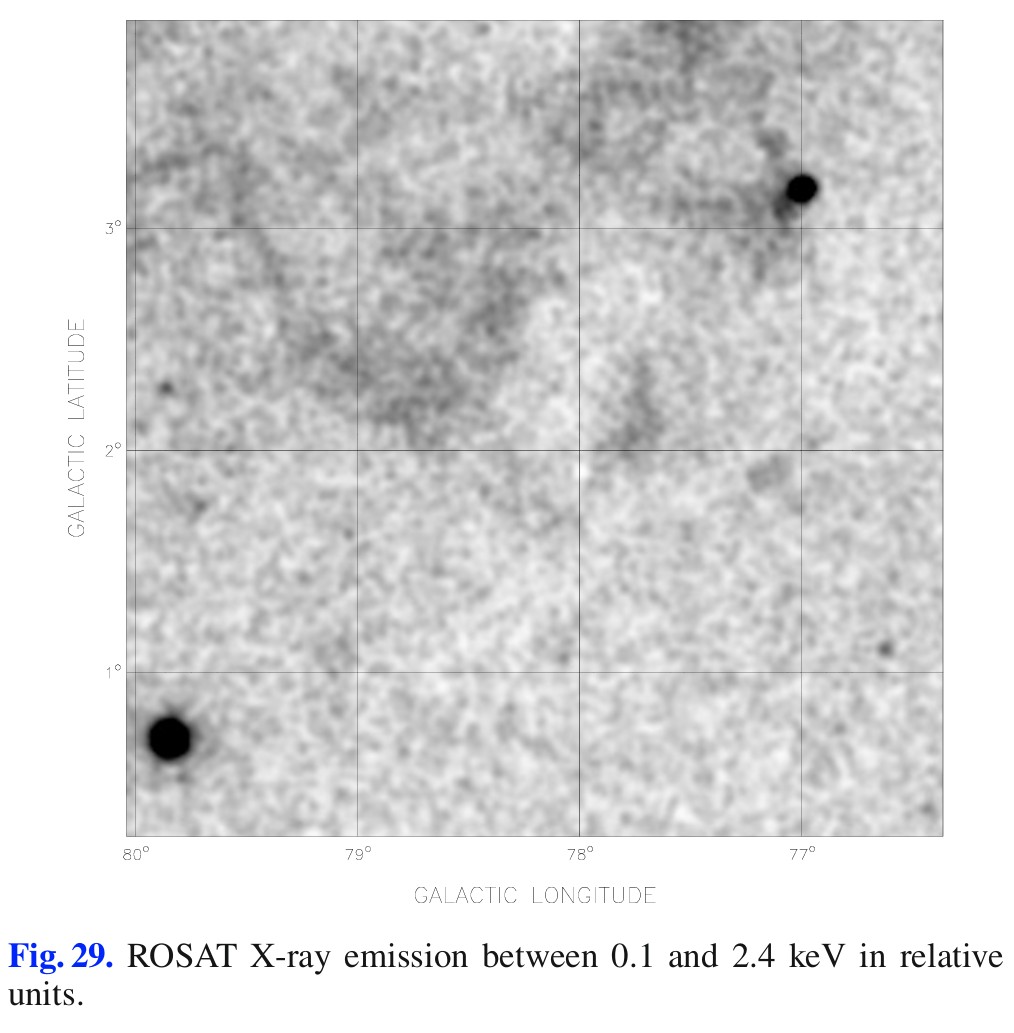
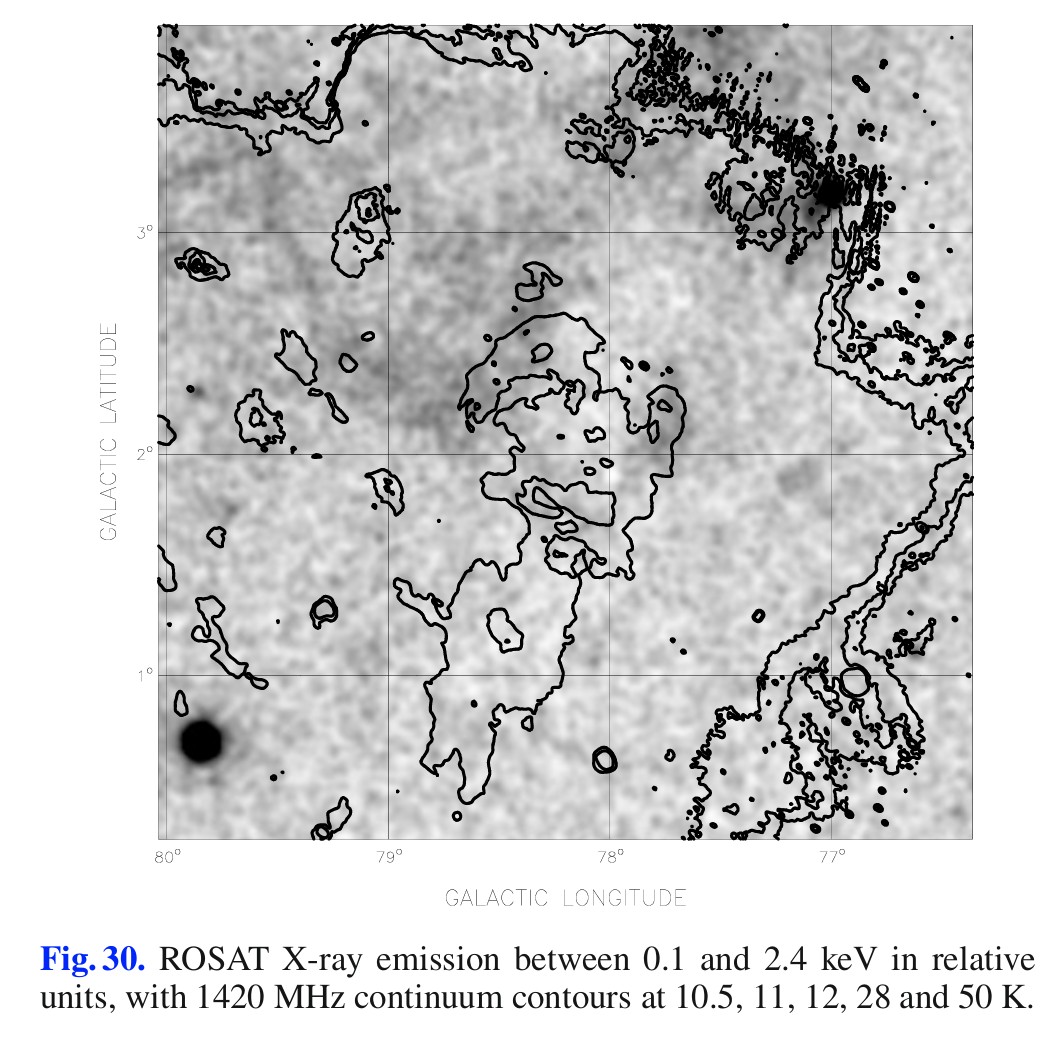
While the authors hypothesized that this faint shell “could have been caused by a breakout of the SNR blast wave into a medium of lower density”, they could not exclude that it is a line-of-sight coincidence. However, whether caused by SNR G078.2+02.1 or not, the shell is clearly visible and its southern structural features are conspicuously similar to those of the optical signal of DBW 41 and LBN 223. Therefore, one can hypothesize that the HII regions DWB 41 and LBN 223 (and possibly DWB 35) may be part of the shell and hence portions of a supernova remnant.
